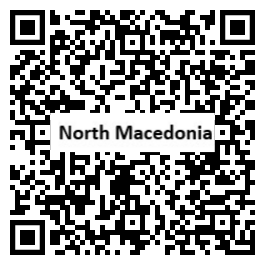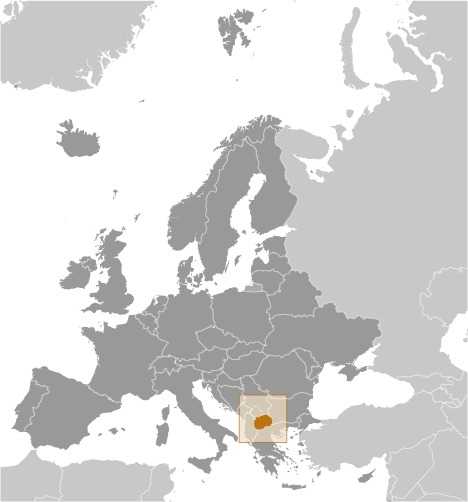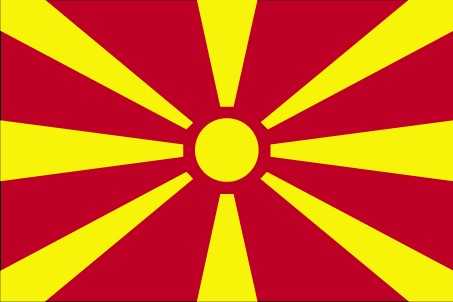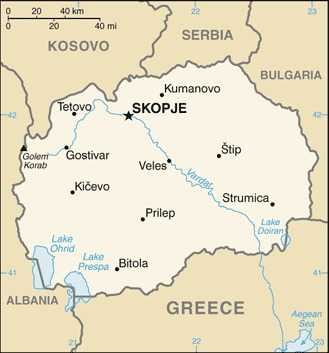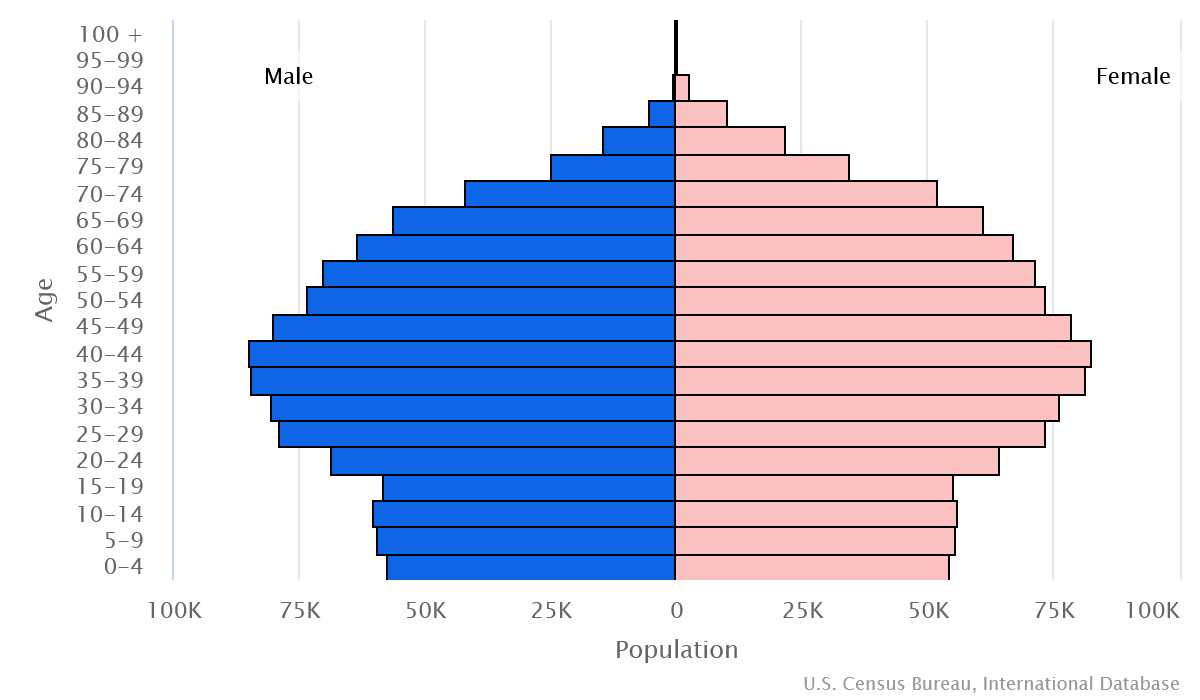Introduction
Background
North Macedonia gained its independence peacefully from Yugoslavia in 1991 under the name "Macedonia." In 2018, Macedonia signed the Prespa Accord with Greece, agreeing to change its name to the Republic of North Macedonia, and the agreement went into force on 12 February 2019.
Geography
Area
total : 25,713 sq km
land: 25,433 sq km
water: 280 sq km
Climate
warm, dry summers and autumns; relatively cold winters with heavy snowfall
Natural resources
low-grade iron ore, copper, lead, zinc, chromite, manganese, nickel, tungsten, gold, silver, asbestos, gypsum, timber, arable land
People and Society
Population
total: 2,135,622
Ethnic groups
Macedonian 58.4%, Albanian 24.3%, Turkish 3.9%, Romani 2.5%, Serb 1.3%, other 2.3%, persons for whom data were taken from administrative sources and no ethnic affiliation data was available 7.2% (2021 est.)
Languages
Macedonian (official) 61.4%, Albanian (official) 24.3%, Turkish 3.4%, Romani 1.7%, other (includes Aromanian (Vlach) and Bosnian) 2%, unspecified 7.2% (2021 est.); note - data represent mother tongue; minority languages are co-official with Macedonian in municipalities where they are spoken by at least 20% of the population; Albanian is co-official in Tetovo, Brvenica, Vrapciste, and other municipalities; Turkish is co-official in Centar Zupa and Plasnica; Romani is co-official in Suto Orizari; Aromanian is co-official in Krusevo; Serbian is co-official in Cucer Sandevo
Religions
Macedonian Orthodox 46.1%, Muslim 32.2%, other Christian 13.8%, other and non-believers 0.5%, unspecified 7.4% (2021 est.)
Population growth rate
0.1% (2024 est.)
Government
Government type
parliamentary republic
Capital
name: Skopje
Executive branch
chief of state: President Gordana SILJANOVSKA-DAVKOVA (since 12 May 2024)
head of government: President Gordana SILJANOVSKA-DAVKOVA (since 12 May 2024)
Legislative branch
description: unicameral Assembly - Sobranie in Macedonian, Kuvend in Albanian (between 120 and 140 seats, current 123; members directly elected in multi-seat constituencies by closed-list proportional representation vote; possibility of 3 directly elected in diaspora constituencies by simple majority vote provided there is sufficient voter turnout; members serve 4-year terms)
Economy
Economic overview
upper-middle-income European economy; recovering from energy-driven inflation; macroeconomic support from IMF and EU lending facilities; stalled progress on EU accession; fiscal consolidation hampered by deficit spending on public works; structural challenges of emigration, low productivity growth, and governance
Real GDP (purchasing power parity)
$42.444 billion (2023 est.)
$42.012 billion (2022 est.)
$41.099 billion (2021 est.)
Real GDP per capita
$23,400 (2023 est.)
$22,900 (2022 est.)
$22,400 (2021 est.)
Agricultural products
milk, grapes, chilies/peppers, wheat, potatoes, apples, tomatoes, cabbages, maize, barley (2022)
Industries
food processing, beverages, textiles, chemicals, iron, steel, cement, energy, pharmaceuticals, automotive parts
Exports
$10.748 billion (2023 est.)
$10.126 billion (2022 est.)
$9.208 billion (2021 est.)
Exports - partners
Germany 42%, Serbia 8%, Greece 7%, Bulgaria 5%, Italy 3% (2022)
Exports - commodities
reaction and catalytic products, insulated wire, electricity, garments, vehicle parts/accessories (2022)
Imports
$12.745 billion (2023 est.)
$13.008 billion (2022 est.)
$11.362 billion (2021 est.)
Imports - partners
UK 16%, Greece 13%, Germany 9%, Serbia 8%, China 6% (2022)
Imports - commodities
platinum, refined petroleum, electricity, precious metal compounds, natural gas (2022)
Exchange rates
Macedonian denars (MKD) per US dollar -
Page last updated: Wednesday, July 24, 2024
